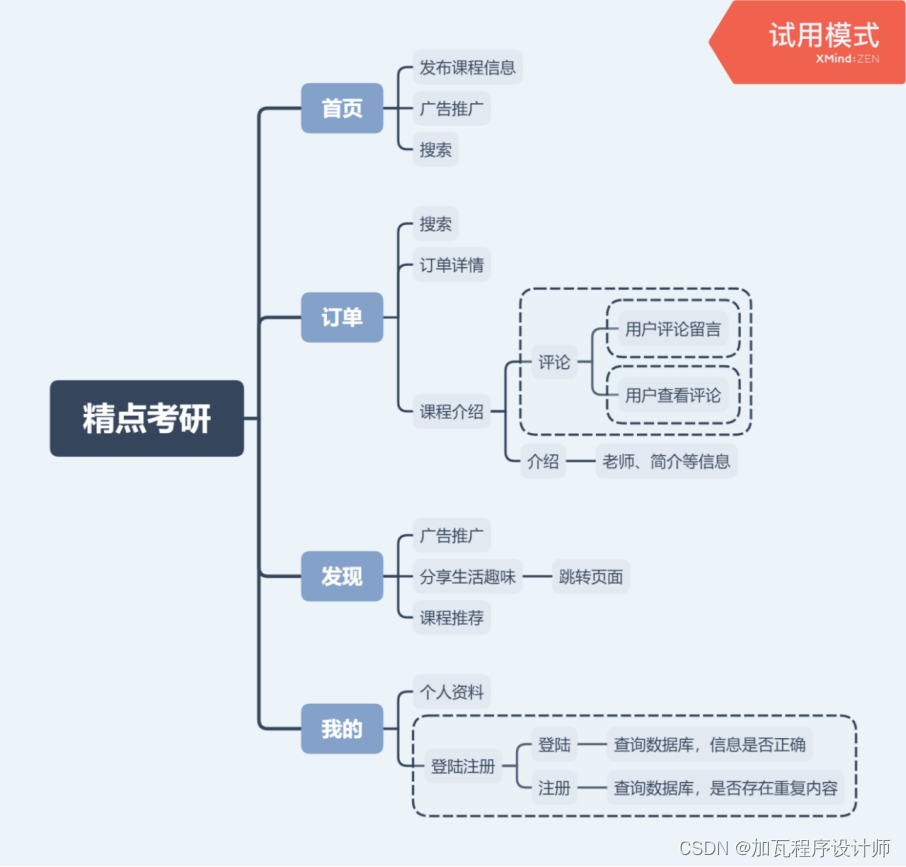MPI并行正则采样排序PSRS算法原理及实现
正则采样排序PSRS的MPI算法算法流程假设有 ppp 个进程,有 NNN 条数据需要排序。均匀划分:将 NNN 条数据均匀划分为 ppp 段,每个进程处理一段数据。其中 i (i=0,1,…,p−1)i\ (i=0,1,\dots,p-1)i&
正则采样排序PSRS的MPI算法
Github 完整代码地址:https://github.com/HenryLiu0/MPI-PSRS
算法流程
假设有 p p p 个进程,有 N N N 条数据需要排序。
1. 均匀划分
将 N N N 条数据均匀划分为 p p p 段,每个进程处理一段数据。其中 i ( i = 0 , 1 , … , p − 1 ) i\ (i=0,1,\dots,p-1) i (i=0,1,…,p−1) 号进程处理 ⌊ i × N p ⌋ \lfloor\dfrac{i \times N}{p}\rfloor ⌊pi×N⌋ 到 ⌊ ( i + 1 ) × N p ⌋ − 1 \lfloor\dfrac{(i+1) \times N}{p}\rfloor-1 ⌊p(i+1)×N⌋−1 行(行号从0开始计算);
3个进程划分18个数据的结果如下,一个进程处理一段。

在实现上,由于数据较大(32G),为了充分并行节省时间,由各进程读取所需要的数据,同样达到均匀划分效果。实现代码如下:
#define BLOCK_LOW(my_rank, comm_sz, T) ((my_rank)*(T)/(comm_sz))
#define BLOCK_SIZE(my_rank, comm_sz, T) (BLOCK_HIGH(my_rank,comm_sz,T) - BLOCK_LOW(my_rank,comm_sz,T) + 1)
// 打开文件
ifstream fin(fileName, ios::binary);
// 计算各进程读取文件的起始行号和大小
unsigned long myDataStart = BLOCK_LOW(my_rank, comm_sz, dataLength);
unsigned long myDataLength = BLOCK_SIZE(my_rank, comm_sz, dataLength);
// 将文件指针移动到起始行号
fin.seekg((myDataStart)*sizeof(unsigned long), ios::beg);
unsigned long *myData = new unsigned long[myDataLength];
// 读取数据
for(unsigned long i=0; i<myDataLength; i++)
fin.read((char*)&myData[i], sizeof(unsigned long));
fin.close();
2. 局部排序
各进程对各自的数据进行排序。
例子如下,各段数据各自有序:

代码如下,可以调用算法库:
sort(myData, myData+myDataLength);
3. 选取样本
p p p 个进程中,每个进程需要选取出 p p p 个样本(regular samples),选取规则为 ⌊ i × d a t a L e n g t h p ⌋ , i = 0 , 1 , … p − 1 \lfloor\dfrac{i\times dataLength}{p}\rfloor,\ i =0,1,\dots p-1 ⌊pi×dataLength⌋, i=0,1,…p−1。dataLength 是进程各自的数据长度。注意此时选取的 p p p 个样本也是有序的。
如下图三个进程中,每个进程选取出三个样本:

代码如下:
unsigned long *regularSamples = new unsigned long[comm_sz];
for(int index=0; index<comm_sz; index++)
regularSamples[index] = myData[(index*myDataLength)/comm_sz];
4. 样本排序
用一个进程对 p p p 个进程的共 p × p p\times p p×p 个样本进行排序,此时样本都是局部有序的,使用归并能减少时间复杂度。
如下图,processor 1将9个样本排序:

在实现中,由0号进程负责样本排序,首先需要 Gather 操作,将样本收集起来,然后要进行归并。
Gather 操作:
unsigned long *gatherRegSam;
if(my_rank == 0)
gatherRegSam = new unsigned long[comm_sz*comm_sz];
// sendbuf, sendcount, sendtype, recvbuf, recvcount, recvtype, root, comm
MPI_Gather(regularSamples, comm_sz, MPI_UNSIGNED_LONG, gatherRegSam, comm_sz, MPI_UNSIGNED_LONG, 0, MPI_COMM_WORLD);
归并函数:
struct mmdata {
// 待归并数组序号
int stindex;
// 在数组中的序号
int index;
unsigned long stvalue;
mmdata(int st=0, int id=0, unsigned long stv = 0):stindex(st),index(id),stvalue(stv){}
};
// mmdata比较运算符重载,在优先队列的表现是mmdata中stvalue小的排在队列前面
bool operator<( const mmdata & One, const mmdata & Two) {
return One.stvalue > Two.stvalue;
}
// 各进程regularSamples二维数组,各进程regularSamples长度,待归并数组数量,结果数组,待归并总数据量
void multiple_merge(unsigned long* starts[], const int lengths[], const int Number, unsigned long newArray[], const int newArrayLength) {
priority_queue< mmdata> priorities;
// 将每个待归并数组的第一个数加入优先队列,同时保存它所在待归并数组序号和数字在数组中的序号
for(int i=0; i<Number;i++) {
if (lengths[i]>0) {
priorities.push(mmdata(i,0,starts[i][0]));
}
}
int newArrayindex = 0;
while (!priorities.empty() && (newArrayindex<newArrayLength)) {
// 拿下最小的数据
mmdata xxx = priorities.top();
priorities.pop();
// 将拿下的数据加入到结果数组中
newArray[newArrayindex++] = starts[xxx.stindex][xxx.index];
// 如果被拿下数据不是所在的待归并数组的最后一个元素,将下一个元素push进优先队列
if ( lengths[xxx.stindex]>(xxx.index+1)) {
priorities.push(mmdata(xxx.stindex, xxx.index+1, starts[xxx.stindex][xxx.index+1]));
}
}
}
归并样本:
if(my_rank == 0) {
// start用于存储gatherRegSam中各进程RegularSamples开始下标,相当于二维数组
unsigned long **starts = new unsigned long* [comm_sz];
// gatherRegSam中各进程RegularSamples长度,都一样是comm_sz
int *lengths = new int[comm_sz];
for(int i=0; i<comm_sz; i++) {
starts[i] = &gatherRegSam[i*comm_sz];
lengths[i] = comm_sz;
}
// 因为各进程的的ragularSamples就是有序的,因此只需要将gatherRegSam中的各进程数据归并即可
unsigned long *sortedGatRegSam = new unsigned long[comm_sz*comm_sz];
multiple_merge(starts, lengths, comm_sz, sortedGatRegSam, comm_sz*comm_sz);
}
5. 选取主元
一个进程从排好序的样本中选取 p − 1 p-1 p−1 个主元。选取方法是 i × p , i = 1 , 2 , … , p − 1 i\times p,\ i=1,2,\dots ,p-1 i×p, i=1,2,…,p−1。
例子如下,从9个样本中选取2个主元:

选取主元代码如下:
for(int i=0; i<comm_sz-1; i++)
privots[i] = sortedGatRegSam[(i+1)*comm_sz];
6. 主元划分
p p p 个进程的数据按照 p − 1 p-1 p−1 个主元划分为 p p p 段。
例子如下,3个进程的数据被都被2个主元划分为3段:

在具体实现中,0号进程要将 p − 1 p-1 p−1 个主元广播到其它所有进程。然后所有进程将按照主元划分。
// 将主元广播到其它进程
MPI_Bcast(privots, comm_sz-1, MPI_UNSIGNED_LONG, 0, MPI_COMM_WORLD);
// partStartIndex保存每段开始下标
int *partStartIndex = new int[comm_sz];
// partLength保存每段的长度
int *partLength = new int[comm_sz];
unsigned long dataIndex = 0;
for(int partIndex = 0; partIndex<comm_sz-1; partIndex++) {
partStartIndex[partIndex] = dataIndex;
partLength[partIndex] = 0;
while((dataIndex<myDataLength) && (myData[dataIndex]<=privots[partIndex])) {
dataIndex++;
partLength[partIndex]++;
}
}
// 最后一段数据补齐(防止主元溢出)
partStartIndex[comm_sz-1] = dataIndex;
partLength[comm_sz-1] = myDataLength - dataIndex;
7. 全局交换
进程 i ( i = 0 , 1 , … p − 1 ) i\ (i=0,1,\dots p-1) i (i=0,1,…p−1) 将第 j ( j = 0 , 1 , … , p − 1 ) j\ (j=0,1,\dots,p-1) j (j=0,1,…,p−1) 段发送给进程 j j j。也就是每个进程都要给其它所有进程发送数据段,并且还要从其它所有进程中接收数据段,所以称为全局交换。
例子如下:

在具体实现中,可以使用 MPI_Alltoall 和 MPI_Alltoallv 简化操作,进程 i i i 先使用 MPI_Alltoall 将第 j j j 段数据的长度发送给进程 j j j(或者说进程 j j j 使用 MPI_Alltoall 接收进程 i i i 的第 j j j 段数据的长度),进程 j j j 将这个长度保存在 recvRankPartLen[i] 中,进程 j j j 知道长度后便可以使用 MPI_Alltoallv 接收进程 i i i 的第 j j j 段数据了。
// 接收各进程数据段长度到recvRankPartLen中
int *recvRankPartLen = new int[comm_sz];
MPI_Alltoall(partLength, 1, MPI_INT, recvRankPartLen, 1, MPI_INT, MPI_COMM_WORLD);
// 计算接收到的数据段在缓存中的摆放位置(距离起始地址的偏移量)
int rankPartLenSum = 0;
int *rankPartStart = new int[comm_sz];
for(int i=0; i<comm_sz; i++) {
rankPartStart[i] = rankPartLenSum;
rankPartLenSum += recvRankPartLen[i];
}
unsigned long *recvPartData = new unsigned long[rankPartLenSum];
// 发送数据段和接收数据段
MPI_Alltoallv(myData, partLength, partStartIndex, MPI_UNSIGNED_LONG,recvPartData, recvRankPartLen, rankPartStart, MPI_UNSIGNED_LONG, MPI_COMM_WORLD);
需要注意的是
int MPI_Alltoallv(const void *sendbuf, const int *sendcounts, const int *sdispls, MPI_Datatype sendtype, void *recvbuf, const int *recvcounts, const int *rdispls, MPI_Datatype recvtype, MPI_Comm comm)其中
sendcounts, sdispls, recvcounts, rdispls都是const int *类型,不能是unsigned long *类型,导致发送的数据段长度不能超过 2 31 − 1 2^{31}-1 231−1,而总数据量却有 2 32 2^{32} 232。因此在进程数 p = 2 p=2 p=2 和总数据量为 2 32 2^{32} 232 的情况下运行一定会出现错误(因为分成的两段数据一定有一段要超过 2 31 − 1 2^{31}-1 231−1)。实际上,当数据量为 2 32 2^{32} 232 时,尽管总进程数大于2,程序也往往会意外中断(怀疑是此处的问题)
8. 归并排序
各处理器对接收到的 p p p 个数据段进行归并,因为 p p p 个数据段已经是局部有序的。
例子如下:

代码如下:
unsigned long **mulPartStart = new unsigned long*[comm_sz];
for(int i=0; i<comm_sz; i++)
mulPartStart[i] = &recvPartData[rankPartStart[i]];
unsigned long *sortedRes = new unsigned long[rankPartLenSum];
multiple_merge(mulPartStart, recvRankPartLen, comm_sz, sortedRes, rankPartLenSum);
完成以上操作后,将进程 0 到 p − 1 p-1 p−1 的数据按顺序拼接起来,就是全部数据排序结果。
结果展示
T p T_p Tp 表(单位:秒)
X 代表不能运行
| n\p | 1 | 2 | 4 | 8 | 16 | 32 | 64 | 112 |
|---|---|---|---|---|---|---|---|---|
| 14 | 0.007 | 0.005 | 0.003 | 0.004 | 0.018 | 0.193 | 0.564 | 0.208 |
| 18 | 0.124 | 0.079 | 0.046 | 0.029 | 0.016 | 0.312 | 0.611 | 0.222 |
| 22 | 2.231 | 1.348 | 0.757 | 0.418 | 0.24 | 0.49 | 0.821 | 0.311 |
| 26 | 39.197 | 22.935 | 12.992 | 7.132 | 3.897 | 3.366 | 3.762 | 3.309 |
| 30 | 1561.28 | 387.574 | 221.611 | 121.713 | 68.411 | 44.623 | 46.147 | 68.628 |
| 31 | X | 808.719 | 461.703 | 248.49 | 201.645 | 147.301 | 185.333 | 84.508 |
| 32 | X | X | X | X | X | X | 375.605 | 222.34 |
最后
您的点赞是对我最大的激励!
更多推荐
 已为社区贡献1条内容
已为社区贡献1条内容










所有评论(0)